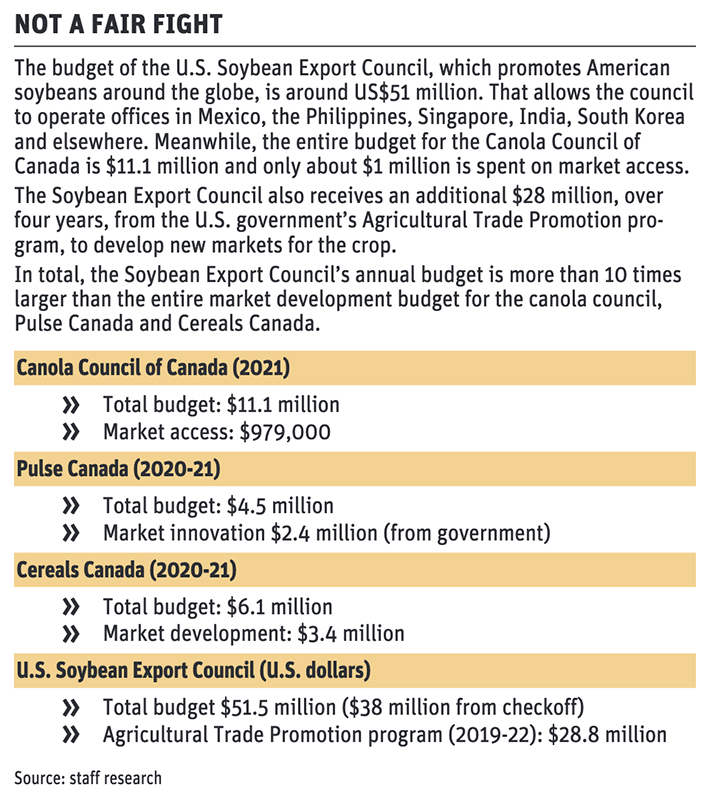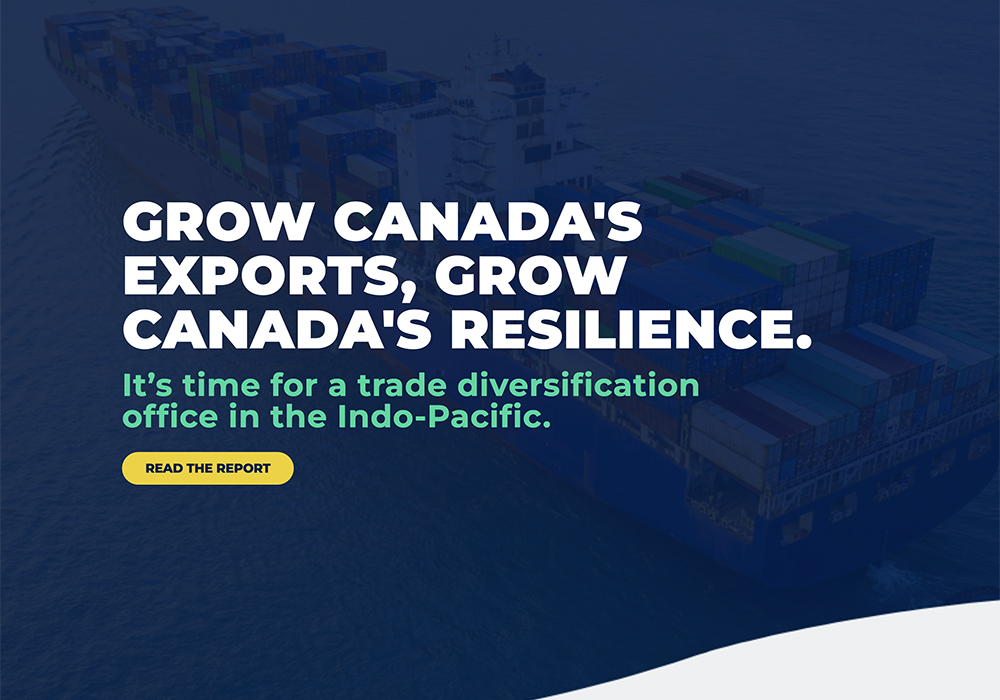Crop associations representing cereals, canola and pulses ask the federal government for a market access office
Canada’s grain industry is shifting its attention away from China and toward Indo-Pacific region countries, such as Indonesia, the Philippines and Vietnam.
As part of that shift, Cereals Canada, Pulse Canada and the Canola Council of Canada are asking the federal government to establish offices in Southeast Asia to resolve barriers to trade and build relationships with grain importers in the region.
“The establishment of a strengthened presence in the Indo-Pacific is recommended because of the enhanced visibility and market access value,” says a report from the three commodity groups, titled Agricultural Strategy for Indo-Pacific — best practices in addressing agricultural trade barriers.
“Within the Indo-Pacific region, over-dependency on China is a strategic concern shared by the (United States) and Australia. Canada’s pivot to the Indo-Pacific (and away from China) is essential to maintain its market share.”
Pulse Canada, Cereals Canada and the canola council released the report June 1.
One large office in Singapore, or multiple offices in Vietnam, Indonesia and elsewhere, are needed for several reasons:
- Canada’s grain and value-added industry is competing with the U.S., Australia and Europe in the region.
- National standards on pesticide residues in Southeast Asia that don’t mesh with global standards.
- Despite free-trade agreements such as the Comprehensive and Progressive Agreement for Trans-Pacific Partnership, non-tariff trade barriers have become the “preferred instrument to restrict trade,” the report says.
“Much of the issues around market access these days… is around SPS measures (sanitary and phyto-sanitary) and chemical residues,” said Jim Everson, canola council president.
As an example, there might be an issue with how a shipment of grain is fumigated for pests.
“Where there’s a difference of opinion between officials in Canada and officials in the other country about whether or not it is necessary or practical…. (Also) countries around the world are adopting national lists… (for) maximum residue levels (of pesticides).”
To prevent disruptions to trade and expand exports to the region, the three commodity groups say Canadian experts are needed, on the ground, to prevent and resolve conflicts.
“The office (would) primarily, in our view, be made up of a variety of specialized government officials, who are mostly cultivating good relationships, from a regulatory and science basis,” Everson said. “We would see this largely being funded through government resources…. Don’t try to do market access from Canada. Do it there with government employees and specialist employees, in those locations.”
A news release for the Indo-Pacific market strategy says cereals, pulses and canola represent $45 billion in economic activity in Canada.
Everson said government is better suited to operate the trade offices because of technical expertise.
“These (steps) that are being used (to restrict) market access are for crop protection issues… and science issues,” he said. “It’s critical that it be (staffed by) people who are specialized in that area and regulators…. specialized, technical, regulatory expertise.”
A grain industry representative, who is not being named because their comments could affect companies where they were employed, said the federal government would need to fund an office in Singapore or other locations because the canola council, Pulse Canada and Cereals Canada can’t afford to cover the cost.
Canada’s grain sector is small compared to the U.S., where commodity groups spend tens of millions on global market development. The U.S. Soybean Export Council has a budget of more than US$50 million to boost soybean sales in Asia, the Middle East and other regions.
The U.S. Grains Council and U.S. Wheat Associates also maintain permanent offices in southeast Asia.
The industry rep said Canadian farmers might be willing to contribute more check-off dollars to fund a trade office for canola, cereals and pulse crops in Southeast Asia, but some grain companies and oilseed crushers would be reluctant to contribute the necessary funds.
Farmers pay a levy on tonnes of canola grown to the council. Grain companies and oilseed crushers contribute a levy on exported and crushed canola seed.
The canola council’s budget declined in 2018, after Richardson International pulled its levy dollars from the organization. Richardson officials said the council’s agronomy and market development work was redundant because private companies have their own agronomists and salespeople.
“The value proposition, the cost of membership, (is) not in line with what we (see) as being reasonable or justified,” said Jean-Marc Ruest, Richardson’s senior vice-president of corporate affairs, in 2018.
The 26-page report on the Agricultural Strategy for the Indo-Pacific offers a list of suggestions and proposals to promote Canadian ag commodities in the region. One of key messages is the value of a permanent presence in Asia.

“Almost all agri-food market access stakeholders reiterated the importance of striving for market permanence. You can’t just visit once; consistency is what counts when it comes to building relationships,” the report said.
The document also cautioned against multiple groups speaking for Canada’s grain industry.
The provinces of Alberta and Saskatchewan maintain trade offices in several locations in Asia, including Singapore. Those additional voices can muddle the message.
“Multiple federal, provincial and trade association touchpoints and engagement can quickly get messy, with the host country confused and possibly annoyed,” the report said. “Moreover, there will always be differences in viewpoints and priorities. It takes time and dedication to ensure that all the relevant stakeholders are on the same page.”
It’s not helpful for the Alberta government to talk about Alberta canola in Asia because “nobody buys ‘Alberta’ canola,” the industry rep said.
Everson doesn’t think there’s a serious problem with too many voices speaking for Canada’s oilseed industry in Asia.
“I would not say so. I think’s that (statement in the report) is more a watch out… making sure there is alignment,” he said.
“Saskatchewan and Alberta have put various officials in markets. My perception of that they generally keep pretty close touch with the federal government…. By and large, I think Canadians manage that fairly well.”
















